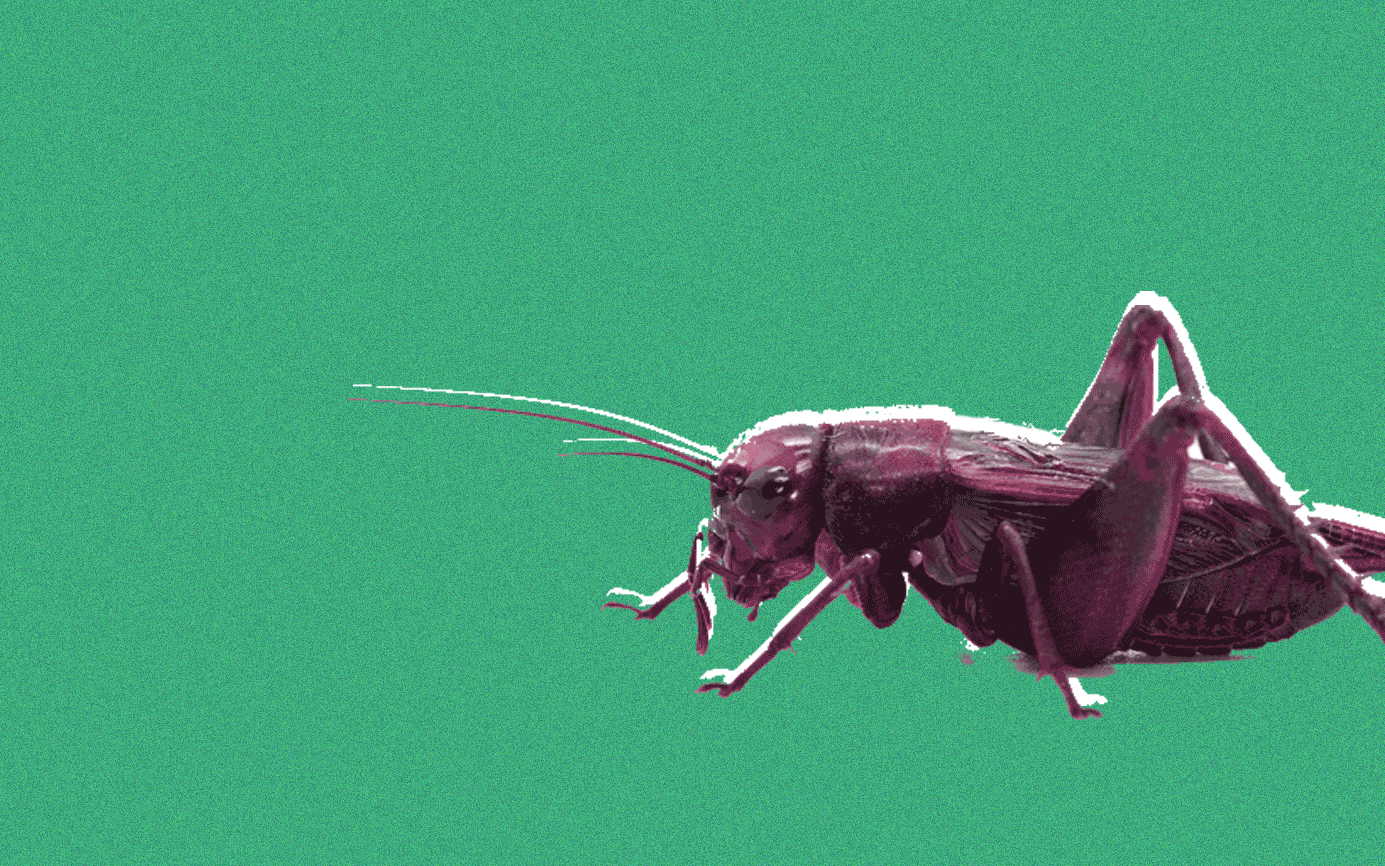
The first cold front of the year has arrived, bringing this brutally long summer to a merciful (if still largely symbolic) end. As you’d expect from any minor shift away from the Texas heat, this upending of the natural order comes accompanied by biblical plague: Hordes of crickets have once more descended on parts of the state like so many Californians, eliciting nearly as much panic across Reddit threads and social media feeds.
Crickets blanket the walls of our homes, our institutions of higher learning, our Targets. They loiter outside malls and gas stations like particularly obnoxious teenagers. Some of the bolder crickets will slip inside air ducts, then lie in wait to drop from the ceiling into your hair or coffee mug, just to see your face; in cricket circles, this is known as “boundary-pushing comedy.” In the morning, they sit patiently just outside your front door, waiting for the chance to sneak inside and find a nice, secluded spot where they can sing their sweet cricket song, every 90 seconds or so, until you’re driven to smashing holes in the drywall. At night, they gather their numbers and camp on your lawn, a live studio audience commenting ironically on every dumb thing you say.
This week, crickets have already forced at least one Austin business to close temporarily, and prompted the University of Texas at San Antonio to issue a statement on the cricket “situation.” Their corpses are strewn across our sidewalks and our Capitol steps, as though some mass die-in protesting whatever it is crickets are pissed about. Not enough rotting fruit, I guess. If you live in El Paso, in Houston, or in the Panhandle, you may consider yourself blessed, for your crickets are more likely to be rugged individualists, less susceptible to joining a swarm, apparently. But throughout Central Texas, they are everywhere, and they are disgusting.
Open my back door and a swam of crickets take over our living room, how come no one warned me about this happening in texas?????
— Buddha (@Thebuddha_3) October 8, 2019
NOPE. NOPE. NOPE.
— Alex Caprariello (@alcaprari23) October 8, 2019
Thousands of crickets line the wall of the Goodwill in Leander, Texas 🤢🦗 pic.twitter.com/MLkEnzEJHp
https://twitter.com/kulvdub/status/1181588044522110976
https://twitter.com/lovetrishaaaa/status/1181599731371433984
Yes, there are few more recognizable signs of autumn’s arrival in Texas than that first nip of cold in the air, pumpkin patches sprouting along the road, and the sound of cricket carcasses crunching underfoot. Crickets are as entwined with the season as a pumpkin spice latte, to name another place you might find one. But judging from the annual panic that always coincides with their first appearance, it seems like we tend to forget just how bad it can get until they’re in our faces again. The cricket makes a horrific mess, becomes a social media pariah, slips away for a year to insect rehab or whatever, then waltzes back in around Oscar season, so that everyone’s like, “Oh yeah, this asshole.” It’s a pattern they just keep repeating, like Mel Gibson. And every single time, we find ourselves shrieking, “Why is this happening?” from rooftops that are absolutely covered in the little bastards.
First, let us clarify that we’re talking specifically about the Texas field cricket, a species that is distinguished from the equally common Southeastern field cricket solely by its courtship song: fewer low-frequency ticks, less pulses per trill, generally just more of a rascally, “love ‘em and leave ’em” kind of attitude. The females who can’t help but be wooed by these lazy come-ons will mate and lay their eggs in the fall, dropping as many as 150 to 400 eggs at a time. Those eggs ride out the winter deep in the soil, then hatch in the spring, with young crickets spending the summer maturing to adulthood through a series of unpaid internships. By the time that first bit of cooler weather rolls around, they’re finally ready to mate themselves, scampering off into the crisp fall air like so many horny college freshmen.
These invasions can get particularly nasty whenever there’s a wet spring followed by a dry summer. This could explain why most of them have befallen Central Texans who just suffered through near-drought conditions, only to be rewarded with verdant fields of bugs by old Mother Nature, a tyrant with the sense of humor of a late-period Roman emperor. And while entomologists all smugly remind us that these cricket outbreaks are “one of the most predictable pest events of the year,” right up there with South by Southwest, it doesn’t make it any less disgusting or alarming.
Knowing the crickets are coming also hasn’t given us much in the way of preventative measures. You can spray your doors and windows with insecticides, of course, or set bait in your landscaping. You can look for leaks and other wet spots, since crickets are attracted to moisture. Most importantly, you can turn off your lights at night, which are the leading cause of cricket infestation. Like all desperate singles, randy crickets will always stagger toward any source of light, whether it’s a CVS or your garage, rather than admitting defeat and slinking home. Mostly, however, we just have to wait them out. Cricket mating season is short, usually lasting only a few weeks, and before long they will give up and resume their ordinary cricket lives of godly abstinence and being eaten by owls.
Although by then, all the crickets who didn’t make it will begin to rot, their corpses emitting a foul odorthat settles over the streets and inside the walls of buildings as one final act of revenge. But then, this too will pass. By this time next year you’ll have forgotten about crickets completely, until you hear the Bernard Herrmann sting of their song once more, and those little black clouds begin their climb anew up the side of your house. Next time, try not to act so surprised.
- More About:
- Critters





